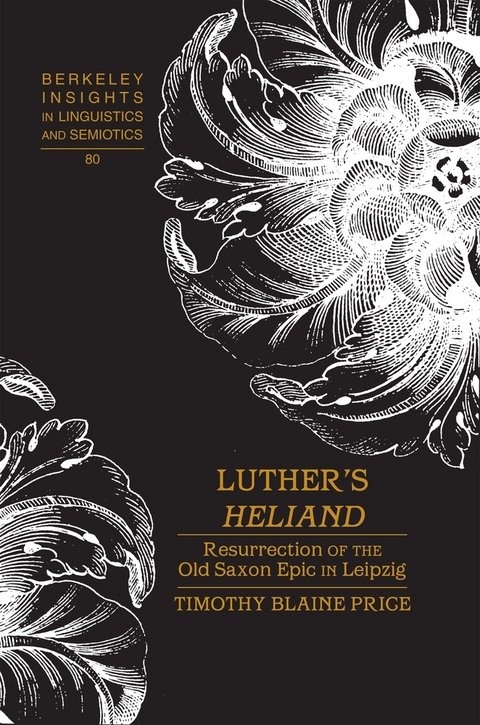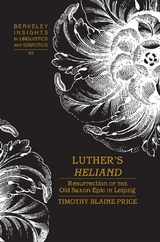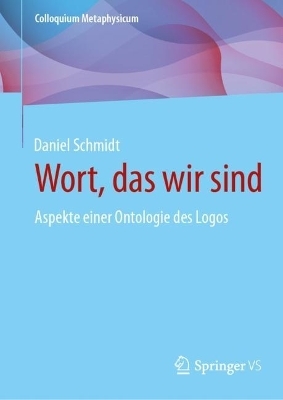Luther’s «Heliand»
Resurrection of the Old Saxon Epic in Leipzig
Seiten
2011
|
New edition
Peter Lang Publishing Inc (Verlag)
978-1-4331-1394-9 (ISBN)
Peter Lang Publishing Inc (Verlag)
978-1-4331-1394-9 (ISBN)
Following the trail of the rumors' sources, this title untangles historical relationships between the builders of the Leipzig University Library and several of their students - all men who comprised Luther's innermost circle of Reformation thinkers.
The 2006 discovery of the Old Saxon Heliand manuscript fragment (MS L) in Leipzig is conspicuous. Besides its proximity to Wittenberg, the Leipzig University Library – site of the discovery – was first dedicated by Martin Luther in 1545. Given this relationship between the Reformer and the discovery location, it seems possible that the Reformer once had access to an original version of the Old Saxon Heliand, perhaps as an aid in his efforts to render Biblical Hebraisms into vernacular German idioms at a time of budding German nationalism. Indeed, long before the Old Saxon epic received the name by which it is currently known, rumors arose about Luther’s possession of an ancient vernacular Germanic Bible with a Latin preface. Even so, the source and age of these rumors are enigmatic. Were these rumors merely a myth created by later Protestants to counter Rome’s denunciation of Luther as a heretic?
Following the trail of the rumors’ sources, Luther’s Heliand untangles historical relationships between the builders of the Leipzig University Library and several of their students – all men who comprised Luther’s innermost circle of Reformation thinkers. In their student notes, letters to colleagues, and printed diatribes against the Church and the Empire, these men recorded vital hints regarding the timing and location of their own discovery of the ancient Germanic Bible. Dating of these published accounts indicates that already several years prior to its dedication by Luther, the fledgling Leipzig University Library housed a medieval codex with features identical to those of the extant Old Saxon Heliand manuscripts, in particular MS L.
The 2006 discovery of the Old Saxon Heliand manuscript fragment (MS L) in Leipzig is conspicuous. Besides its proximity to Wittenberg, the Leipzig University Library – site of the discovery – was first dedicated by Martin Luther in 1545. Given this relationship between the Reformer and the discovery location, it seems possible that the Reformer once had access to an original version of the Old Saxon Heliand, perhaps as an aid in his efforts to render Biblical Hebraisms into vernacular German idioms at a time of budding German nationalism. Indeed, long before the Old Saxon epic received the name by which it is currently known, rumors arose about Luther’s possession of an ancient vernacular Germanic Bible with a Latin preface. Even so, the source and age of these rumors are enigmatic. Were these rumors merely a myth created by later Protestants to counter Rome’s denunciation of Luther as a heretic?
Following the trail of the rumors’ sources, Luther’s Heliand untangles historical relationships between the builders of the Leipzig University Library and several of their students – all men who comprised Luther’s innermost circle of Reformation thinkers. In their student notes, letters to colleagues, and printed diatribes against the Church and the Empire, these men recorded vital hints regarding the timing and location of their own discovery of the ancient Germanic Bible. Dating of these published accounts indicates that already several years prior to its dedication by Luther, the fledgling Leipzig University Library housed a medieval codex with features identical to those of the extant Old Saxon Heliand manuscripts, in particular MS L.
Timothy Blaine Price received his PhD in Germanic linguistics from the University of California, Berkeley, where he served as James R. Gray Lecturer of reading and composition and as a lecturer of German. He also served as an adjunct instructor of German at the College of Alameda. He is currently pursuing his Habilitation in Historical Comparative Linguistics as part of the LOEWE-funded «Digital Humanities» Project at the Johann Wolfgang Goethe University, Frankfurt am Main.
| Reihe/Serie | Berkeley Insights in Linguistics and Semiotics ; 80 | Berkeley Insights in Linguistics and Semiotics ; 80 |
|---|---|
| Verlagsort | New York |
| Sprache | englisch |
| Maße | 160 x 230 mm |
| Gewicht | 580 g |
| Themenwelt | Literatur ► Klassiker / Moderne Klassiker |
| Schulbuch / Wörterbuch ► Sprach- und Wörterbuch / Deutsch | |
| Schulbuch / Wörterbuch ► Wörterbuch / Fremdsprachen | |
| Geisteswissenschaften ► Philosophie ► Sprachphilosophie | |
| Geisteswissenschaften ► Sprach- / Literaturwissenschaft ► Anglistik / Amerikanistik | |
| Geisteswissenschaften ► Sprach- / Literaturwissenschaft ► Literaturwissenschaft | |
| Geisteswissenschaften ► Sprach- / Literaturwissenschaft ► Sprachwissenschaft | |
| Schlagworte | Old Saxon, Heliand, MS L, Martin Luther, Philipp Melanchthon, Reformation, Leipzig, Pforta, Naumburg, Charles V, Georg Fabricius,Ioannes Manlius, Martin Chemnitz, Monotessaron, Fulda, Ottonian homeland, Caspar Borner, Joachim Camerarius, Hrabanus Maurus, m |
| ISBN-10 | 1-4331-1394-5 / 1433113945 |
| ISBN-13 | 978-1-4331-1394-9 / 9781433113949 |
| Zustand | Neuware |
| Haben Sie eine Frage zum Produkt? |
Mehr entdecken
aus dem Bereich
aus dem Bereich
Aspekte einer Ontologie des Logos
Buch | Hardcover (2024)
Springer Fachmedien (Verlag)
119,99 €
Wie die Menschheit zu ihrer größten Erfindung kam
Buch | Softcover (2022)
C.H.Beck (Verlag)
18,00 €
Macht und Legitimität politischer Sprache im Prozess der europäischen …
Buch | Softcover (2023)
Nomos (Verlag)
74,00 €




